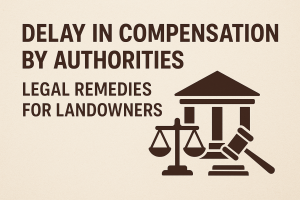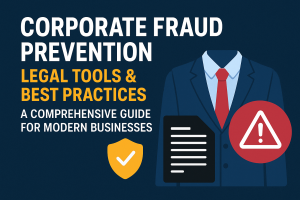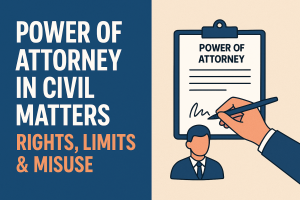Introduction
On May 22, 2025, a Division Bench of the Hon’ble Supreme Court comprising Justice B.V. Nagarathna and Justice N. Kotiswar Singh delivered a landmark judgment in State of Kerala v. Asianet Satellite Communications Ltd. The judgment deals with the constitutionality of dual taxation on broadcasting services — a question arising from the simultaneous imposition of service tax by the Central Government and entertainment tax by the State of Kerala on Asianet’s Direct-to-Home (DTH) services. This decision has significant implications on the interpretation of legislative powers, federal tax architecture, and the future of digital content taxation in India.
Background and Factual Matrix
Asianet Satellite Communications Ltd. is engaged in the business of providing DTH broadcasting services. While these services were already subject to service tax under the Finance Act, 1994, the State of Kerala levied entertainment tax under the Kerala Entertainment Tax Act. Asianet challenged the levy, arguing that once a central tax is imposed on the same activity, the state lacks legislative competence to impose an additional tax. The case thus raised a critical constitutional question: Can the Centre and States impose distinct taxes on separate aspects of a composite economic activity?
Issue Before the Court
Whether the imposition of entertainment tax by the State on broadcasting services, which are already taxed under the Finance Act, 1994 as a service, violates constitutional provisions governing federal legislative competencies and results in impermissible double taxation?
Ruling and Application of Aspect Theory
The Supreme Court ruled in favour of the State of Kerala and upheld the entertainment tax imposed on broadcasting services, applying the aspect theory to distinguish between the different taxable events involved in broadcasting. The Court held that:
The Centre’s service tax under Entry 97 (residuary powers) of List I covers the provision of broadcasting as a taxable service.
The State’s entertainment tax under Entry 62 of List II covers the entertainment derived from the consumption of such services.
According to the Court, these two levies relate to distinct aspects and fall within separate constitutional domains.
Widened Interpretation of “Entertainment”
Asianet had argued that its services fall solely under Entry 97 of List I and are liable only for central taxation. However, the Court rejected this claim by expanding the traditional understanding of the term “entertainment.”
The Court noted that:
The word “entertainment” must be interpreted in light of modern technological advancements.
Consumption of content through digital platforms in private settings (e.g., homes, mobile phones, personal devices) also qualifies as “entertainment.”
Relying on cases such as Western India Theatres, Express Hotels, and Godfrey Phillips India Ltd., the Court emphasised that the terms “luxuries,” “entertainments,” and “amusements” are interrelated and should be interpreted liberally.
Thus, the act of viewing content using DTH services qualifies as entertainment and can validly attract entertainment tax under Entry 62 of List II.
Constitutional Interpretation and Taxing Powers
The Court clarified that:
Entry 31 of List I (covering posts, telegraphs, and broadcasting) is a regulatory entry and not a taxation entry.
The power to levy tax must be traced to a specific taxation entry in the Constitution.
Entry 62 of List II permits the State to impose taxes on luxuries, including entertainments and amusements.
Service tax, which has no corresponding taxation entry in List I or II, derives its constitutional legitimacy from the residuary Entry 97 of List I read with Article 248.
This interpretation aligns with prior rulings in MPV Sundararamier & Co. v. State of Andhra Pradesh and Union of India v. H.S. Dhillon, where the Court held that taxation cannot be presumed under regulatory entries.
Pith and Substance Doctrine
To assess legislative competence, the Court applied the doctrine of “pith and substance,” which requires examining the true nature and substance of legislation. The test is whether the core of the law falls within the permitted entry, even if it incidentally encroaches upon another entry.
Here, the Court found that:
The primary character of broadcasting is “transmission of signals,” which falls under Entry 31 of List I.
However, the aspect of “providing entertainment” through such transmission (via set-top boxes, decryption cards, etc.) falls within Entry 62 of List II.
This dual character justified both Central and State levies under distinct entries.
Application of the Aspect Theory
The aspect theory recognises that a single activity may have multiple dimensions and thus be subject to different laws by different legislatures. This theory has been accepted in Indian jurisprudence in cases such as Federation of Hotel & Restaurant Associations of India v. Union of India, Subrahmanyan Chettiar, and Mohit Minerals Pvt Ltd.
In the present case:
The Court held that the transmission of broadcasting signals constitutes a taxable “service” under Central law.
The consumption of those signals for entertainment constitutes a taxable “luxury” under State law.
Each facet triggers a different taxable event, validating dual taxation.
Overlap in Fact, Not in Law
The Court made an important distinction:
Though the activities may overlap factually (e.g., DTH transmission results in entertainment), they are distinct in law.
Taxation occurs on different events — service provision (Entry 97) vs. entertainment consumption (Entry 62).
Hence, no unconstitutional double taxation arises.
Legal Perspective: Law Firm and Advocate Insights
From a legal advisory standpoint, this judgment demands renewed attention to compliance structures in broadcasting and digital services. Law firms representing broadcasters, DTH providers, and OTT platforms must proactively assess potential exposures to state levies despite GST applicability.
Advocate Analysis: The judgment offers a constitutionally coherent reconciliation of overlapping legislative powers. By affirming the doctrine of aspect theory, it permits simultaneous taxation without undermining the validity of either levy. However, this reasoning raises concerns in the post-GST era, where uniformity and simplification were the core objectives.
As digital platforms expand, this judgment could open the door for state-level entertainment taxes even on services already taxed under GST, potentially increasing litigation and regulatory burdens. Legal practitioners must now advise clients to re-evaluate the classification and bifurcation of services for both GST and state tax compliance.
Implications for GST Architecture and Fiscal Federalism
While the judgment reaffirms legislative competence under Entries 97 and 62, it indirectly challenges the spirit of the 101st Constitutional Amendment and Article 246A, which aimed to create a unified indirect tax regime under GST.
The decision may incentivise States to reassert taxing powers on digital content delivery.
Fragmentation in tax structures may arise, threatening “one nation, one tax.”
OTT platforms, already taxed under GST as OIDAR (Online Information Database Access and Retrieval), may face additional state levies.
This could reintroduce jurisdictional disputes and compliance confusion that GST sought to eliminate.
Expanding the Scope of Entertainment
Another major implication of the ruling is the broadened definition of “entertainment.”
The Court acknowledged that entertainment today includes digital content consumed in private settings.
This opens the possibility for State-imposed levies on mobile apps, gaming platforms, and even social media content.
Such interpretation risks overlapping with existing GST categories and complicating the taxation landscape.
Conclusion
The Supreme Court’s ruling in State of Kerala v. Asianet Satellite Communications Ltd. is a significant reaffirmation of foundational constitutional doctrines — aspect theory and pith and substance — to justify dual taxation on distinct aspects of a single economic activity. It clarifies legislative competence and provides constitutional validation for entertainment tax by States alongside service tax by the Centre.
At the same time, it poses a challenge to the objectives of the GST regime, potentially destabilising the harmonised tax structure envisioned by Article 246A. The judgment invites deeper collaboration between the GST Council and States to avoid fragmented tax burdens and ensure legal certainty for digital and broadcasting service providers.
Moving forward, tax policymakers, legal advisors, and compliance officers must work collaboratively to strike a balance between federal legislative autonomy and the simplicity promised by the GST framework. Harmonising taxation of digital entertainment within GST is essential to prevent constitutional conflicts and safeguard the ease of doing business in the digital economy.



